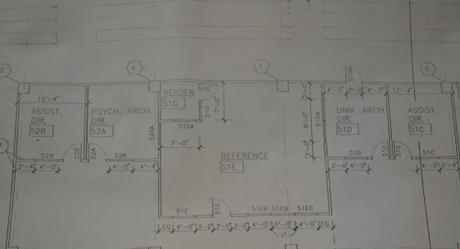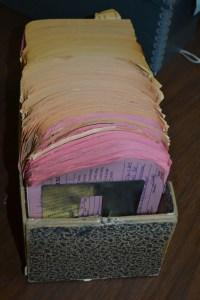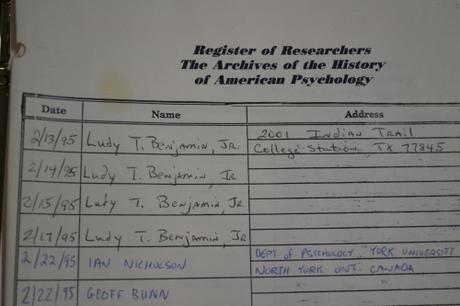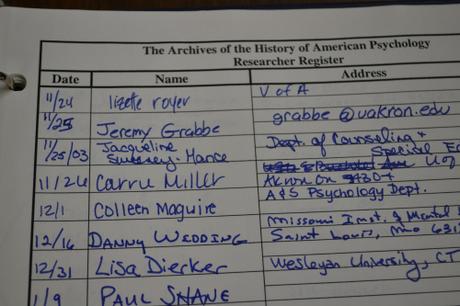–contributed by Danielle Bernert.
As some of you may know, the Cummings Center for the History of Psychology is celebrating its 50th anniversary this year. While this is quite an accomplishment, I am troubled by the fact that my own one month anniversary here at the CCHP has somehow been overlooked. Don’t worry, if you act quickly and get your cards to me by next week, I promise to still act surprised.
Speaking of surprises, I cannot believe that it has already been over a month since I began work on the CCHP archives collection. Fifty years can accumulate a great amount of material, and I have spent most of my time here trying to figure out what items really capture the mission and essence of CCHP. I have sorted through floorplans, numerous newspaper articles, employee training manuals, and (my favorite) a personalized letter to AHAP founder Dr. Popplestone from a “world-famous” hypnotist, listing a complete breakdown of his show and subsequent charges. I don’t know if Dr. Popplestone ever replied.

Early plans for the AHAP space in the Polsky Building.

Early plans for the AHAP space in the Polsky Building.
I have since moved on from the gleaning process to organizing selected materials. This involves complex and standardized actions such as sorting the objects into categories, wrestling with putting together the archival boxes, and organizing materials into these boxes. Folding archival boxes aside, the most challenging part of this process has been deciding upon the best theme of organization. What is the best way to divide up these materials? I decided to focus more on the topic rather than type of object, with category topics such as “Finances” and “Publicity”. I felt as though centering certain materials on the topic would better serve researchers, as it would be much easier to find a certain event in the “Events” section, rather than a box marked “Pamphlets”. Dividing by topic may also help the CCHP employees, as the organization’s digital files are divided similarly on the server. These broad-themed divisions are called “series” in the archival world, with subsequent smaller groups that can be measured in boxes, folders, items, etc.

Example of smaller group items within a collection; in this case AHAP phone messages from 1990-1999.
I was advised to keep the series fairly general, as this collection will continue to grow with the organization. This type of mindset is based off of the principles of extensible processing, a term discussed heavily in the book Extensible Processing for Archives and Special Collection: Reducing Processing Backlogs by Daniel A. Santamaria (2015). Extensible processing revolves around an attitude of “iterative rather than linear and one size fits all” processing, meaning that there is no set routine of steps. Rather, the archivist adjusts as the collection develops and grows. This collection is unique as it (unlike many collections) is not one square, completed amount of material. Rather, it will be added to and re-organized multiple times.

Well-known visitors to AHAP from earlier years.

Well-known visitors to AHAP from earlier years.
This idea of a fluid collection is somewhat new to me, as I am used to something much more static with definite boundaries. This new assemblage contains no such limits and is not so easily defined. It contains items that date from 1965 to less than a month ago. While the beginning date is clear, the end is left open, leaving room for further specification and growth. My responsibility in this extensible process to make sure there is a stable structure of organization for others to build upon yet still allowing room for flexibility and adjustment. As this project progresses and I continue to work on the creation of a finding aid and online companion, I will have to keep this idea of an extensible collection first and foremost in my mind.
